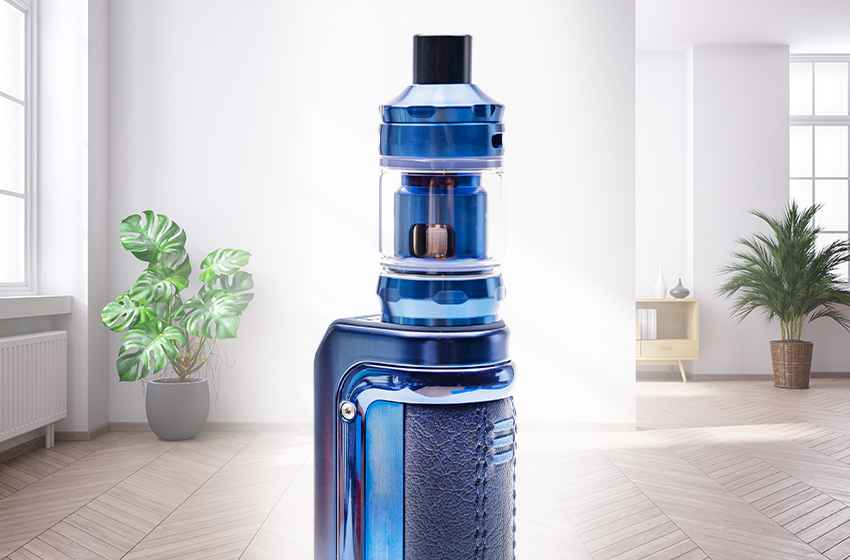Various peer-reviewed scientific studies provide evidence that e-cigarettes and heated tobacco products (HTPs) have no adverse impact on indoor air quality in contrast to what combustible cigarettes cause, reducing the exposure of consumers and non-consumers to deadly chemicals.
A 2017 study conducted by researchers from L.I. Medved’s Research Center of Preventive Toxicology, Food and Chemical Safety, Ministry of Health of Ukraine found that during heated tobacco product use in enclosed areas, substances such as benzo(a) pyrene, nicotine and ammonia were not detected.
“Contrary to conventional cigarettes, the actual content of the air safety indicators (carbon monoxide, carbon dioxide and formaldehyde) in indoor air during and after consumption of electrically heated tobacco system by no means exceeded the threshold limit value for atmospheric air,” according to the study published on the Ukrainian Journal of Modern Problems of Toxicology.
It is one of the several studies which prove that the use of smoke-free products such as e-cigarettes and HTPs do not negatively affect the air quality in enclosed areas and may provide smokers a significantly less harmful way of consuming nicotine.
The studies show that while combustible cigarettes produce smoke that contains thousands of toxic substances, alternative products that produce vapor are far less harmful to consumers. The vapor emitted can also drastically reduce exposure of non-consumers to such chemicals even in an indoor setting.
Nicotine, while addictive, is relatively harmless, according to the British National Health Service. It is the smoke from combustion that causes nearly all the harm in smoking. Vaping or the use of e-cigarettes, on the other hand, is considered a better way of delivering nicotine without burning or combustion.
“Electronic cigarettes meet many of the criteria of an ideal product to reduce tobacco harm. Although the delivery of nicotine from e-cigarettes depends on several factors, […], they may contain a high dose of nicotine, but do not have harmful components of tobacco smoke […],” the Royal College of Physicians in the United Kingdom said.
A 2018 study by researchers from Kaunas University of Technology in Lithuania compared the indoor concentrations of toxic substances and particulate matter 2.5 and discussed the concentrations of other harmful and potentially-harmful substances.
“In the controlled environment, the use of tobacco heating system or THS (as well as an electronic cigarette) resulted in the lowest concentrations of formaldehyde, benzene, toluene, PM2.5 among majority researched pollution sources (conventional cigarettes, waterpipe, incense, mosquito coils),” authors Violeta Kauneliene, Marija Meisutovic-Akhtarieva and Dainius Martuzevicius said in the study published by ScienceDirect.

“Such data indicate that the levels of the main indoor air pollution markers in case of THS environmental aerosol may be too low to distinguish from the background, thus raising additional challenges for epidemiological studies aiming at the assessments of second-hand exposure in real-life environments,” they said.
Another study also published in ScienceDirect in March 2018 found that emissions from THS or commonly known as heated tobacco products are reduced in indoor air compared to those of conventional cigarettes. The researchers said HTPs have a significantly lower impact on indoor air quality than the conventional combustible cigarette because of significantly lower emissions profile of both aerosol particles and chemical emissions.
It concluded that HTPs had significantly less impact on indoor air quality and that its emissions were significantly less odorous than those from conventional cigarettes and their emissions.
Meanwhile, a 2019 research published by global publication SpringerLink assessed air quality of HTPs under simulated residential conditions. Researchers led by Dr. Maya I. Mitova said that under simulated “Residential Category III” environmental conditions, only two compounds (nicotine and acetaldehyde) and one specific compound (aerosol former glycerin) were attributable to the indoor use of HTPs, but at below harmful levels.
“The quantified concentrations of the three airborne compounds during indoor use (of HTPs) in the high-load-simulated residential environment studies were below the harmful levels defined by cognizant authorities. Thus, normal hygienic measures, such as regular aeration of the residential spaces, would lead to efficient control of these low to negligible levels of pollution,” the study said.
“In conclusion, the use (of HTPs) in an indoor environment, where norms for indoor exposure in terms of adequate ventilation are respected, does not adversely affect the overall indoor air quality,” the researchers said.
Smoke-free products are now promoted in countries that recognize the tobacco harm reduction policy—a pragmatic approach that aims to reduce the harm from smoking cigarettes by using less harmful alternative products such as vapes and HTPs. The United Kingdom saw smoking levels fall by 25 percent since 2013 or when vaping became popular.
Japan also saw cigarette sales decline 34 percent in four years as smokers switched to HTPs.
The Philippines recently passed the Vaporized Nicotine and Non-Nicotine Product Regulation Act or R.A. 11900 that regulates vape and HTPs. It provides smokers with less harmful alternatives to cigarettes with the aim to eventually bring down the smoking rate which affects more than 16 million Filipinos.



















